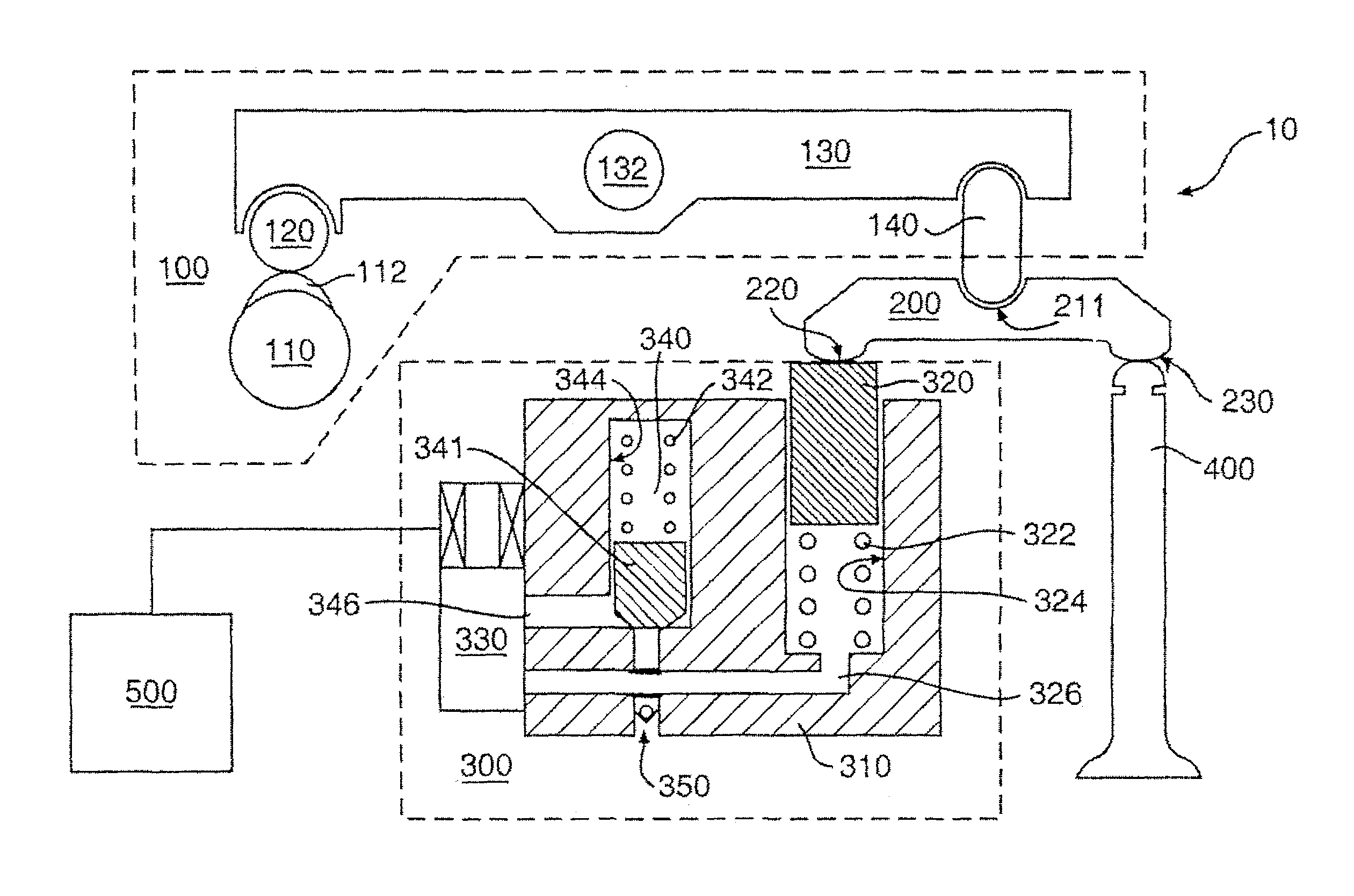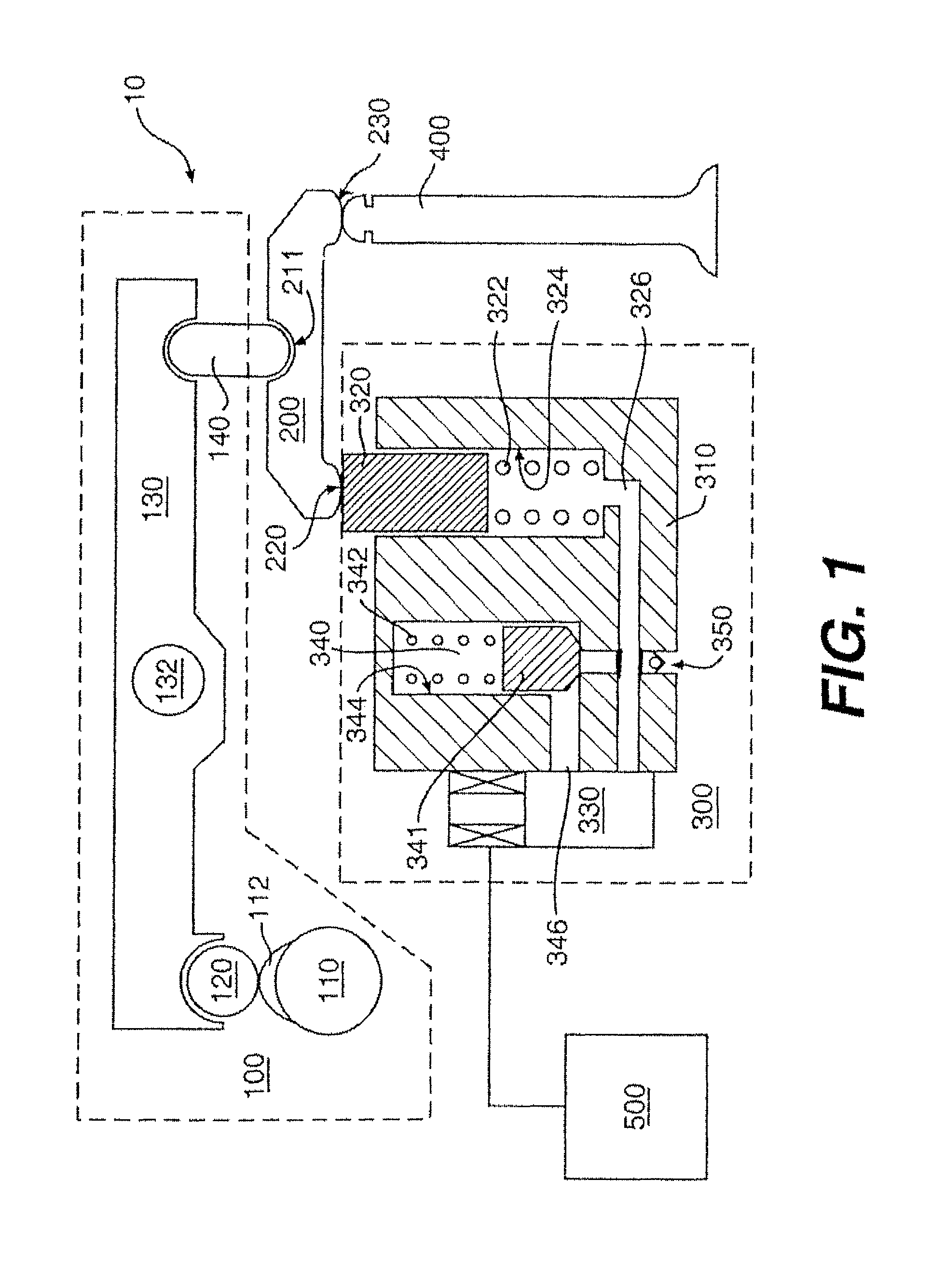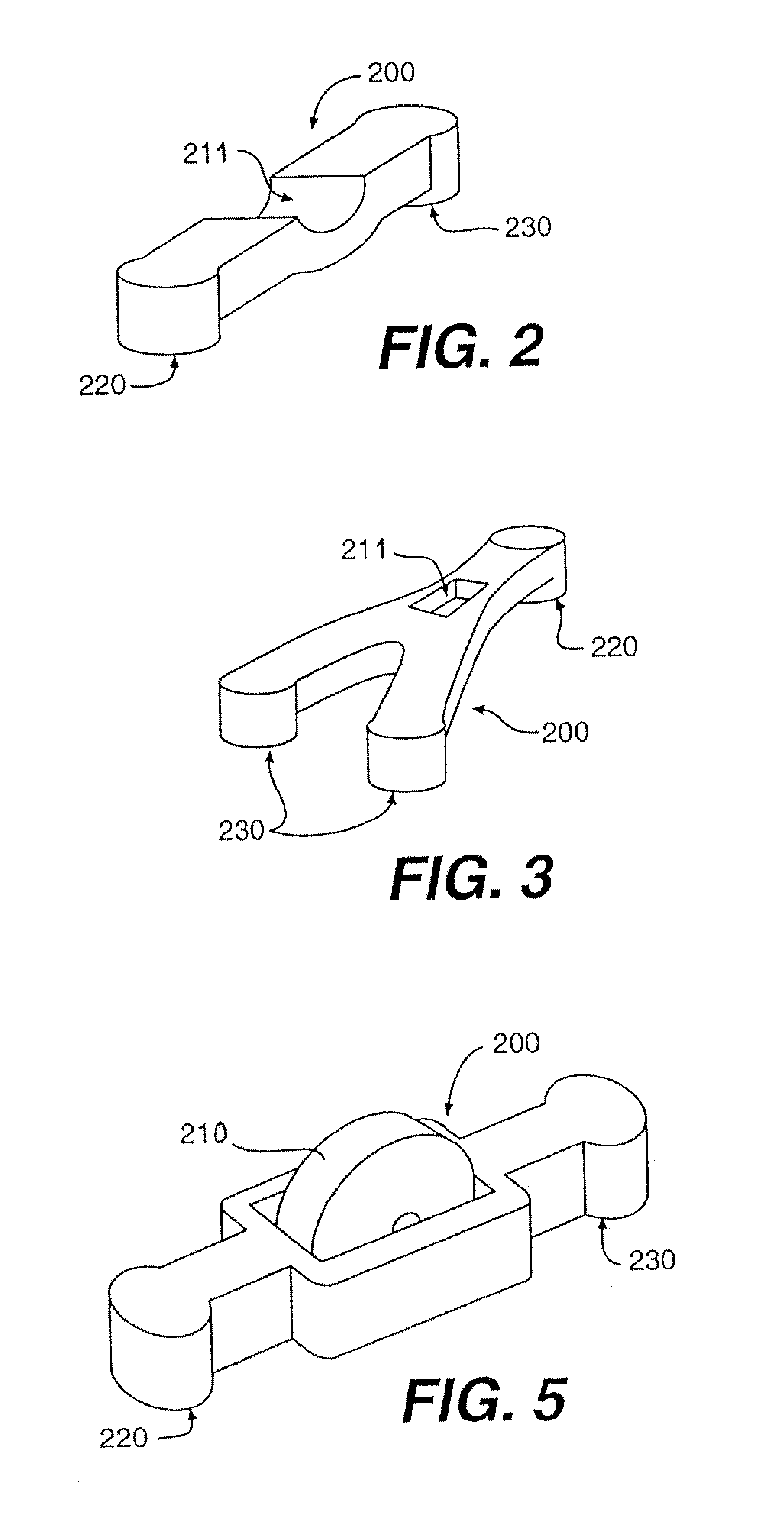Variable lost motion valve actuator and method
a technology of lost motion and actuator, which is applied in the direction of valve drives, non-mechanical valves, electrical control, etc., can solve the problems of difficult adjustment of timing and/or amount of engine valve lift needed, loss motion systems, which are beneficial, and have also been subject to many drawbacks. , to achieve the effect of improving the positive power fuel economy of an engine, reducing engine noise, and reducing engine emissions
- Summary
- Abstract
- Description
- Claims
- Application Information
AI Technical Summary
Benefits of technology
Problems solved by technology
Method used
Image
Examples
first embodiment
[0212]an hydraulic fluid charging system 700 portion of the present invention is shown in FIG. 42. The system 700 includes a inlet check valve 701 that may receive hydraulic fluid (oil) from the main engine supply. Oil passing through the inlet check valve 701 passes through an air vent unit 702 to an hydraulic circuit 703. The hydraulic circuit 703 may pass close to an engine water cooling jacket 715 to remove heat from the oil in the hydraulic circuit 703. The hydraulic circuit connects to the VVA gallery 713 through the check valve 704 and the inlet pump 705. The hydraulic circuit 703 may also connect to a bore housing a solenoid or pressure driven valve 710. A relief valve 714 permits oil to flow from the VVA gallery 713 to the hydraulic circuit 703 as needed.
[0213]The inlet pump 705 may be mechanically driven and connected to the VVA gallery 713 by a pump outlet 706. The VVA gallery 713 may be connected to plural passages 348 associated with each VVA system. The last two outlet...
second embodiment
[0218]a hydraulic fluid charging system 700 is shown in FIG. 43. With reference to FIG. 43, the system 700 includes a cam 100 with one or more lobes 112. The cam 100 contacts a piston 720 which is biased into contact with the cam 100 by a spring 722. The piston 720 is disposed in a bore 725. The space between the end of the bore 725 and the end of the piston 720 defines a pumping chamber 723. The pumping chamber 723 communicates with a hydraulic reservoir 724 via a passage 726 that may be provided with a check valve 727. The pumping chamber 723 may also communicate with a VVA gallery through a passage 728 that may be provided with a check valve 729. The reservoir 724 may receive low pressure hydraulic fluid from the engine oil sump via a passage 730. A return bypass passage 731 including a check valve 732 may connect the passage 728 with the reservoir 724.
[0219]Upon engine starting, cranking of the engine causes the cam 100 to rotate. The rotation of the cam 100 causes the piston 72...
third embodiment
[0224]the hydraulic fluid charging system 700 portion of the present invention is shown in FIG. 46. With reference to FIG. 46, the system 700 includes an inlet hydraulic fluid port 759, check valves 762, an exit check valve 729, a pumping piston 761, a piston bias spring 765, a fluid reservoir 760, a solenoid controlled valve 763, an air bleed tube 758, and a bleed tube check valve 764.
[0225]In the system 700 shown in FIG. 46, the pumping piston 761 may be driven by a cam (not shown) so that it moves upward and back repeatedly within the bore housing it. The piston bias spring 765 is included to ensure that the piston 761 follows the contour of the cam (not shown) used to drive it. The solenoid controlled valve 763 is placed in a hydraulic bypass circuit bracketing the pumping piston 761. The solenoid controlled valve 763 is maintained in an open position during normal engine operation to negate parasitics, and a closed position during engine start up. During normal running, the sys...
PUM
 Login to View More
Login to View More Abstract
Description
Claims
Application Information
 Login to View More
Login to View More - R&D
- Intellectual Property
- Life Sciences
- Materials
- Tech Scout
- Unparalleled Data Quality
- Higher Quality Content
- 60% Fewer Hallucinations
Browse by: Latest US Patents, China's latest patents, Technical Efficacy Thesaurus, Application Domain, Technology Topic, Popular Technical Reports.
© 2025 PatSnap. All rights reserved.Legal|Privacy policy|Modern Slavery Act Transparency Statement|Sitemap|About US| Contact US: help@patsnap.com



